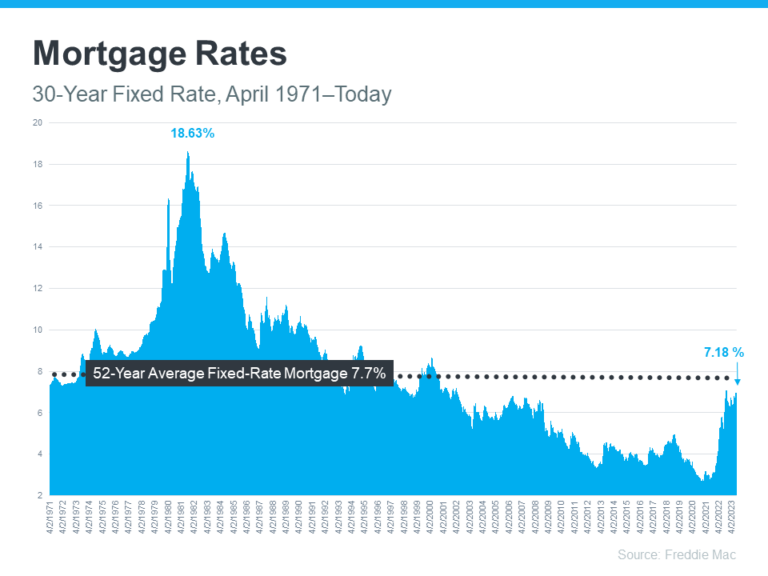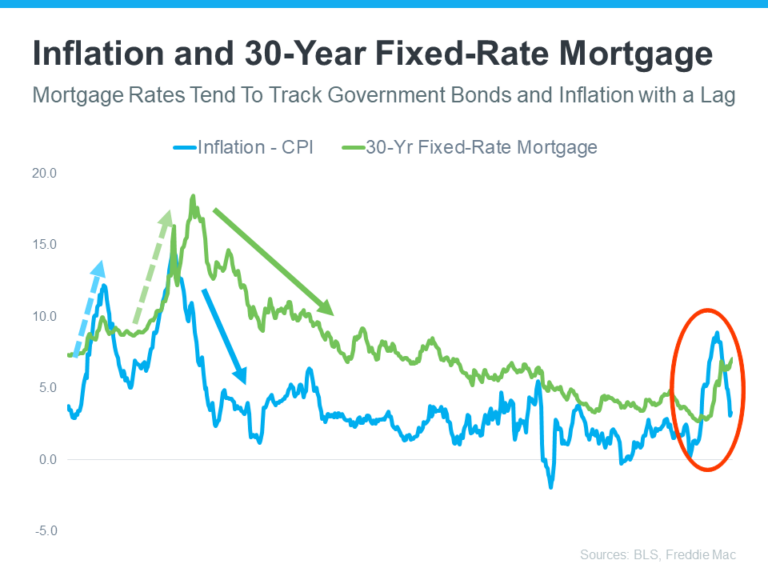Exploring Past, Present, and Possible Future Mortgage Rates
If you’re in the market for a new home, you’re probably keeping a close eye on mortgage rates. After all, these rates play a significant role in determining what you can afford when taking out a home loan. Given the current challenges in housing affordability, it’s an opportune time to take a broader look at where mortgage rates stand historically and how they relate to inflation, which can provide insights into their future trajectory.
Putting Sticker Shock into Perspective
Freddie Mac has been diligently tracking the 30-year fixed mortgage rate since April 1971. They release the results of their Primary Mortgage Market Survey weekly, which aggregates mortgage application data from lenders across the nation.

Taking a glance at the right side of the graph from their data, you’ll notice a significant increase in mortgage rates since the beginning of the previous year. However, even with this uptick, today’s rates remain below the 52-year average. This historical context is essential because it helps explain why the recent rate hike may seem like a shock, despite rates currently being close to their long-term average.
Over the past 15 years, many homebuyers have grown accustomed to mortgage rates ranging from 3% to 5%. This familiarity with lower rates is a key reason why some may find the recent increase surprising. To gauge whether a drop in rates is on the horizon, it’s vital to examine the trajectory of inflation.
What Could Be in Store for Mortgage Rates?
Since early 2022, the Federal Reserve has been diligently working to combat inflation. Historically, there’s been a strong correlation between inflation and mortgage rates. The graph below illustrates this connection:

In this graph, you can observe a consistent link between inflation (depicted in blue) and subsequent movements in mortgage rates (depicted in green). On the left side of the graph, you’ll notice that significant fluctuations in inflation are closely followed by corresponding changes in mortgage rates.
The circled portion of the graph highlights the recent surge in inflation, with mortgage rates showing a similar trend shortly thereafter. While inflation has moderated somewhat this year, mortgage rates have yet to follow suit.
Based on historical patterns, if inflation continues to decrease, mortgage rates could be poised to follow suit. While it’s impossible to predict mortgage rates with absolute certainty, the trend of falling inflation could bode well for the future of mortgage rates, potentially making homeownership more accessible.
In Conclusion
To gain insight into where mortgage rates might be headed, it’s valuable to examine their historical trajectory. The relationship between inflation and mortgage rates has proven to be quite robust. If this historical correlation holds true, the recent easing of inflation could signal a positive outlook for future mortgage rates, aligning with your homeownership aspirations.


